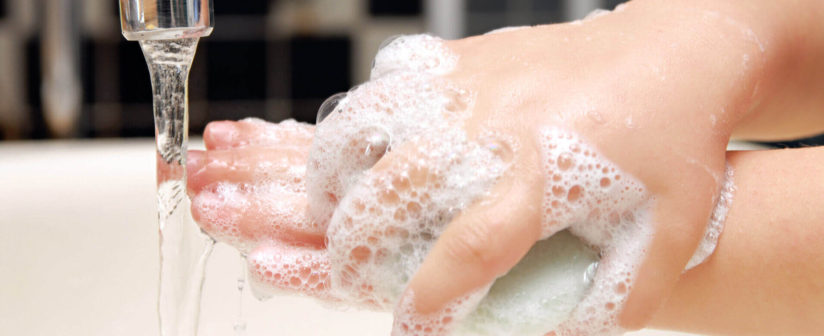Hand washing is one of the best ways to protect yourself and your family from getting sick.
Washing your hands is easy, and it’s one of the most effective ways to prevent the spread of germs. Clean hands can stop germs from spreading from one person to another and throughout an entire community—from your home and workplace to childcare facilities and hospitals.
When should you wash your hands?
As you touch people, surfaces and objects throughout the day, you accumulate germs on your hands. In turn, you can infect yourself with these germs by touching your eyes, nose or mouth. Although it’s impossible to keep your hands germ-free, washing your hands frequently can help limit the transfer of bacteria, viruses and other microbes.
Always wash your hands before:
- Preparing food or eating
- Treating wounds, giving medicine, or caring for a sick or injured person
- Inserting or removing contact lenses
Always wash your hands after:
- Preparing food, especially raw meat or poultry
- Using the toilet or changing a diaper
- Touching an animal or animal toys, leashes or waste
- Blowing your nose, coughing or sneezing into your hands
- Treating wounds or caring for a sick or injured person
- Handling garbage, household or garden chemicals, or anything that could be contaminated — such as a cleaning cloth or soiled shoes
- Shaking hands with others
In addition, wash your hands whenever they look dirty.
What is the right way to wash your hands?
- Wet your hands with water (warm or cold).
- Apply enough soap to cover all over your hands. You can use alcohol-based handrub if you don’t have immediate access to soap and water.
- Rub hands palm to palm.
- Rub the back of your left hand with your right palm with interlaced fingers. Repeat with the other hand.
- Rub your palms together with fingers interlaced.
- Rub the backs of your fingers against your palms with fingers interlocked.
- Clasp your left thumb with your right hand and rub in rotation. Repeat with your left hand and right thumb.
- Rub the tips of your fingers in the other palm in a circular motion, going backwards and forwards. Repeat with the other hand.
- Rinse hands with water (warm or cold).
- Dry thoroughly, ideally with a disposable towel.
- Use the disposable towel to turn off the tap.
What should you do if you don’t have soap and clean, running water?
Washing hands with soap and water is the best way to get rid of germs in most situations. If soap and water are not available, use an alcohol-based hand sanitizer that contains at least 60% alcohol. You can tell if the sanitizer contains at least 60% alcohol by looking at the product label. Alcohol-based hand sanitizers can quickly reduce the number of germs on hands in some situations, but sanitizers do NOT get rid of all types of germs.
Hand sanitizers may not be as effective when hands are visibly dirty or greasy. Furthermore, hand sanitizers might not remove harmful chemicals like pesticides and heavy metals from hands. Be cautious when using hand sanitizers around children; swallowing alcohol-based hand sanitizers can cause alcohol poisoning if a person swallows more than a couple mouthfuls.
How do you use hand sanitizers?
- Apply the gel to the palm of one hand (read the label to learn the correct amount).
- Rub your hands together.
- Rub the gel over all surfaces of your hands and fingers until your hands are dry.
Who is most at risk from the effects of poor hand hygiene?
Children are particularly at risk of picking up infections and spreading them to other people.
It’s especially important to make sure that hands are washed when you’re visiting someone in hospital or other healthcare setting, to help prevent the spread of infection.
Sources:
http://www.mayoclinic.org/healthy-lifestyle/adult-health/in-depth/hand-washing/art-20046253
https://www.cdc.gov/features/handwashing/index.html
http://www.nhs.uk/Livewell/homehygiene/Pages/how-to-wash-your-hands-properly.aspx


